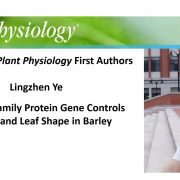
Recognizing Plant Physiology first authors: Lingzhen Ye
Plant Physiology, Plant Physiology: Author ProfilesLingzhen Ye, co-first author of A Trypsin Family Protein Gene Controls Tillering and Leaf Shape in Barley
Current Position: Assistant Professor, Institute of Crop Science, Zhejiang University (Hangzhou, China)
Education: PhD in crop science, Zhejiang University (Hangzhou, China); Bachelor in Biotechnology,…

Rubredoxin A Functions in Early Photosystem II Biogenesis
Research, The Plant Cell, The Plant Cell: In a NutshellKiss et al. report that a rubredoxin-like protein conserved in oxygenic phototrophs binds to the D1 protein and facilitates the formation of the D1/D2 heterodimeric reaction center complex of photosystem II. Plant Cell https://doi.org/10.1105/tpc.19.00155
Background: Photosynthesis is the vital process…

Taproot S4E2: The GRExit and how we choose who goes to grad school
Blog, The Taproot Season 4, The-Taproot0 Comments
/
In this episode, we talk with Dr. Zen Faulkes about the graduate application process, what program directors are looking for and how hard (or indeed impossible) it is to have unbiased selection system.
Zen gained a B.A., Psychology at the University of Lethbridge in 1989 and a Ph.D. at the University…
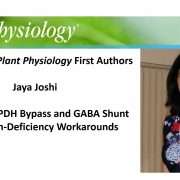
Recognizing Plant Physiology first authors: Jaya Joshi
Plant Physiology, Plant Physiology: Author ProfilesJaya Joshi, first author of Rethinking PDH Bypass and GABA Shunt as Thiamin-Deficiency Workarounds
Current Position: Postdoctoral fellow
Education: PhD in Cell and Molecular Biology, MSc in Plant Biochemistry and BSc in Agricultural Sciences
Non-scientific Interests: painting, reading and tennis
Brief…
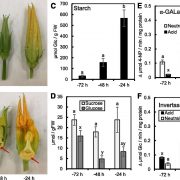
Sugar Metabolism in Squash Nectaries and Nectar
Plant Physiology, Plant Physiology: On The InsideFloral nectar is a sugar-rich solution produced by plants to attract animal pollinators. The best-elucidated model of nectar secretion, based on studies of Arabidopsis (Arabidopsis thaliana), involves the build-up and degradation of nectary starch, the resynthesis of Suc from starch-derived hexoses,…
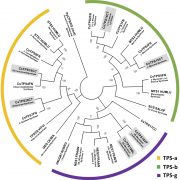
Coregulation of Cannabinoid and Terpenoid Pathways
Plant Physiology, Plant Physiology: On The InsideMany governments have recently enacted laws that allow for the legalization of cannabis for medical and/or recreational purposes. Unfortunately, specific labeling regulations with regard to the composition of active ingredients, serving sizes, and recommended doses are woefully lacking. The capitate-stalked…
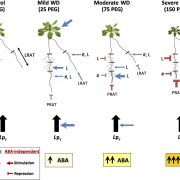
Abscisic Acid Mediates Root Responses to Water Deficit
Plant Physiology, Plant Physiology: On The InsideOf all abiotic stresses faced by plants, water deficit (WD) is the one that most profoundly affects crop productivity. When exposed to WD, plants first respond by restricting stomatal aperture and by rapid changes in root hydraulic conductivity (Lpr). Over a longer term, plants change both shoot growth…

Energy Costs of Root Growth
Plant Physiology, Plant Physiology: On The InsideThe energy costs of root growth are particularly high in dry and compacted soil because soil penetration resistance increases under these conditions. As a result, more photosynthate is needed for root system expansion, leaving less carbon available for aboveground plant growth. Furthermore, the growth…
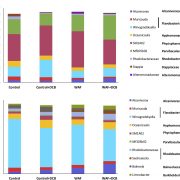
Role of Polysaccharide Synthesis in Diatoms
Plant Physiology, Plant Physiology: On The InsideDiatoms are a type of phytoplankton that account for ~20% of global primary production. Like all phytoplankton, they produce and store copious amounts of polysaccharides. More specifically, diatoms produce significant amounts of b-1,3 glucans, particularly chrysolaminarin. Mutualistic associations…

